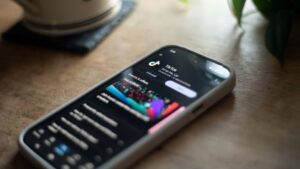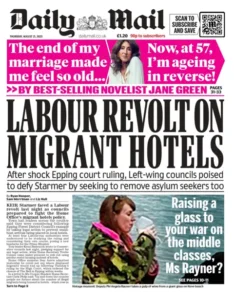Marine researchers are excitedly shedding light on an extraordinary deep-sea ecosystem that thrives in the extreme conditions of the hadal zone, situated between Russia and Alaska. This trench region, ranging from 5,800 to 9,500 meters (19,000 to 30,000 feet) below sea level, is known to be one of the least explored parts of the Earth’s oceans. The ecosystem identified is unique in that it is powered by chemosynthesis rather than photosynthesis, depending on methane and hydrogen sulfide escaping through fractures in the ocean floor, which form what are known as cold seeps.
Geochemist Mengran Du, who was part of an expedition team exploring these depths, reported noticing fascinating life forms during her mission. With just 30 minutes left in her submersible, she decided to extend her exploration to what would become a remarkably fruitful area filled with a variety of clam and tube worm species that had never been documented that deep. Her observations contribute significantly to our understanding of life in these harsh conditions where sunlight cannot penetrate.
The team’s findings were published in the journal *Nature* and indicated that this 2,500-kilometer (1,550-mile) stretch could indeed represent the deepest-known ecosystem of organisms that have adapted to harness methane and other gases for survival. According to Du, who is a professor and researcher at the Institute of Deep-Sea Science and Engineering at the Chinese Academy of Sciences, these organisms have developed ingenious mechanisms to thrive under such formidable circumstances.
Within these trenches, life forms host specialized bacteria that can convert methane and hydrogen sulfide from the ocean floor’s cold seeps into usable energy and nutrients, allowing clams and tube worms to live in an environment devoid of sunlight. This symbiotic relationship showcases the resilience and adaptability of life in extreme environments. This profound discovery suggests that similar ecosystems are likely present in other hadal trenches, potentially offering a realm of research opportunities regarding the limits of life on Earth.
Further analysis revealed unexpectedly high concentrations of methane in sediment samples from the region, a finding that baffled researchers given the usual low levels found in deep-sea sediments. Du and her team propose that microbes could be transforming organic matter in sediments into carbon dioxide — and then into methane — through previously unknown metabolic pathways. This find indicates that microbial life is capable of chemosynthesis at unprecedented depths and manners, supporting the idea of localized organic matter production that these larger organisms can utilize for sustenance.
Moreover, this ecosystem seems to play a significant role in the broader carbon cycle. By acting not only as reservoirs for methane but also as recycling centers for carbon, the hadal trenches appear to be integral in sequestering organic carbon, essential in the global discourse related to greenhouse gases like methane and carbon dioxide that are contributing to climate change.
Although the existence of chemosynthetic communities has long been theorized, the magnitude of this finding has astonished many in the scientific community. Johanna Weston, a deep ocean ecologist from the Woods Hole Oceanographic Institution, expressed her admiration for the comprehensive nature of this new discovery and underscored the crucial role emerging technologies play in analyzing and documenting these deep-sea ecosystems.
Participating in research in such remote environments emphasizes the interconnectedness of the ocean’s depths with surface ecosystems. Recent discoveries, including species uniquely adapted to environmental changes such as plastic pollution, signal a need for more comprehensive studies in the deep sea, particularly given the rapid changes occurring on the surface.
As scientific technology advances, collaborative efforts like the Global Hadal Exploration Program, which connects scientists from multiple nations, will facilitate further exploration and understanding of these enigmatic ecosystems. Du aims to learn more about how these species adapt to harsh conditions, stating that even in the most extreme environments like the hadal trenches, life finds a way to not only survive but thrive. This exciting frontier in marine science will potentially reshape our understanding of biodiversity and resilience within the ocean’s untamed reaches.












